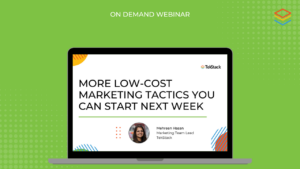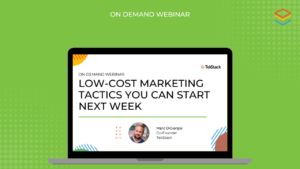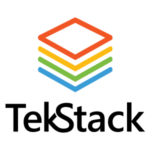
Software deals are facing more scrutiny than ever. With deals extending longer, and win rates heading down not up, its important to put your best efforts into the deals that are in front of you. Here are five ways sellers constantly f*@k up deals, and tips to avoid these pitfalls.
1) Making a Poor First Impression
A first impression is a powerful cognitive bias. Here are the ways most software companies make a poor first impression:
- Take too long to follow-up on a high intent web inquiry like a demo request.
- Not deliver what was promised in the call-to-action. If your company isn’t prepared to demo on the first call, then change ‘Demo Request’ to something more accurate, like “BANT Me”
- Be unprepared for a call. On a first call, sellers need to do their research on the buyer and buyer’s organization
Some tips for making a great first impression
- Have marketing setup an automated flow for all high intent calls to action that provide an option to self schedule, thank the visitor for their interest.
- Automatically add a contact into a follow-up sequence that includes an introductory email from the seller, and phone call and research tasks so the seller is reminded of the work that needs to be done.
- Sellers should show up to calls early, and prepared. Hair combed and presentable. Ideally not while eating lunch.
- Sellers should make notes from the call and those notes should be easily accessible from the account record.
TekStack provides the tools to automate inbound intent. Things like putting interested buyers into an email nurture, or automating the demo follow-up activity with a sequence.
2) Lazy Follow-up
Equally as bad as making a poor first impression, is a poor attempt at follow up. After your initial call, a seller should have a template that makes it easy to do a thorough follow up. A great way to do this is to build what our friends at Neural Impact refer to as an Alignment Letter that summarizes four things:
- the business problem,
- impacts of fixing the problem,
- how you can help fix the problems, and
- next steps.
If you dont have enough information to write an alignment letter, you didn’t ask the right questions in your discovery call. Bonus points for presenting a follow-up using video with a product like Loom or Vidyard. Assume your follow-up email will get forwarded to other buyers in the organization.
3) Single Threading with One Buyer
Forrester states that 80% of B2B Buying Decisions involve three or more buyers. Nothing will guarantee a low win rate more than selling to a single decision maker. Especially if you aren’t working with someone that has decision making authority. Sellers need to identify:
- All the buyers who will impact a decision
- Their authority or role (Economic Buyer, Decision Maker, Influencer)
- Their level of impact (High, Medium, Low)
- How they are measured, how this project impacts their performance
- Where their vote lies (with you, competitor, do nothing)
From there, sellers needs to build a call plan for each buyer. TekStack’s account centric approach makes it easy to identify buyers, and their role in a decision.
4) Emailing Pricing Information
Sending price proposal information via email, asynchronously, is just setting yourself up for heart break. Professional buyers are trained to go dark, shifting the power dynamic away from the seller, towards the buyer. Even if you are not dealing with a trained or experience buyer, if you send them something they don’t like, they’ll just avoid you. Eliminate this risk by requesting a meeting to present a price proposal.
A price proposal meeting will give you the opportunity to solicit real-time feedback. It will also provide an opportunity to explain your pricing model as it may be different from that of their alternative options. Most importantly, it will align your proposal to the value you are providing. After the proposal meeting, your next actions would be to provide an order form and ‘paper’. If your buyer is unwilling to have a proposal meeting, it’s a good sign you are fodder, or they are not serious. Don’t waste your time. Its the last thing you have to give. Relationships are built on reciprocity, so if you can’t get this, you are nothing to them.
5) Trying to Move too Fast
Sellers need to align to the buyer’s timeline. Buyers could care less about your quarter end. What they are thinking about is how your offering integrates into their business cycle. So, if they want to see the value of your product by a certain date, the best thing to do is work backwards from that date.
Align timing and action steps using a simple template such as:
| Step | Date | Responsibility |
| Value Realized | January 2024 | Buyer |
| Go-Live Date | November 2023 | Joint |
| Implementation Kick Off | September 2023 | Joint |
| Order Form Signed | August 2023 | Buyer |
| Vendor IT Due Diligence | July 2023 | Buyer |
| Legal Review | July 2023 | Buyer |
| Vendor Decision | June 2023 | Buyer |
| Proposal Review | June 2023 | Buyer |
| Demos | May 2023 | Joint |
| Short List | May 2023 | Buyer |
| Business Justification | April 2023 | Buyer |
| Long List | March 2023 | Buyer |
These templates are great because a plan like this requires mutual input and agreement on dates. Also, if a buyer’s date slips, a seller can circle back on the plan and find out how this impacts the future steps. Often, it also will underscore the work that the buyer needs to take on to decide. A buyer can use a version of this document to show their colleagues how much due diligence was done to decide. It’s a pretty good CYA tool for your buyer.
Conclusion
You control more of your win rate than you might think. Fixing these all-too-common mistakes will improve your win rate and take that a bit of pressure off the top of your funnel. As an example, If your company can improve win rate from 15% to 25%, this means you can reduce your funnel creation by 40%.
Or, put another way, if your funnel creation stays at full rate, and you can also improve your win rate from 15% to 25%, you can increase bookings by 67% without spending an additional dollar.
TekStack helps B2B Software companies improve their sales performance by providing technology to:
- Maximize inbound, outbound, and partner GTM motions
- Provide sellers with productivity tools to become more efficient
- Provide sales managers with the velocity insights they need to provide coaching and make tactical decisions
- Provide the reporting necessary to make the right strategic GTM decisions.
If you are interested in learning more about TekStack, please get in touch with us below:








